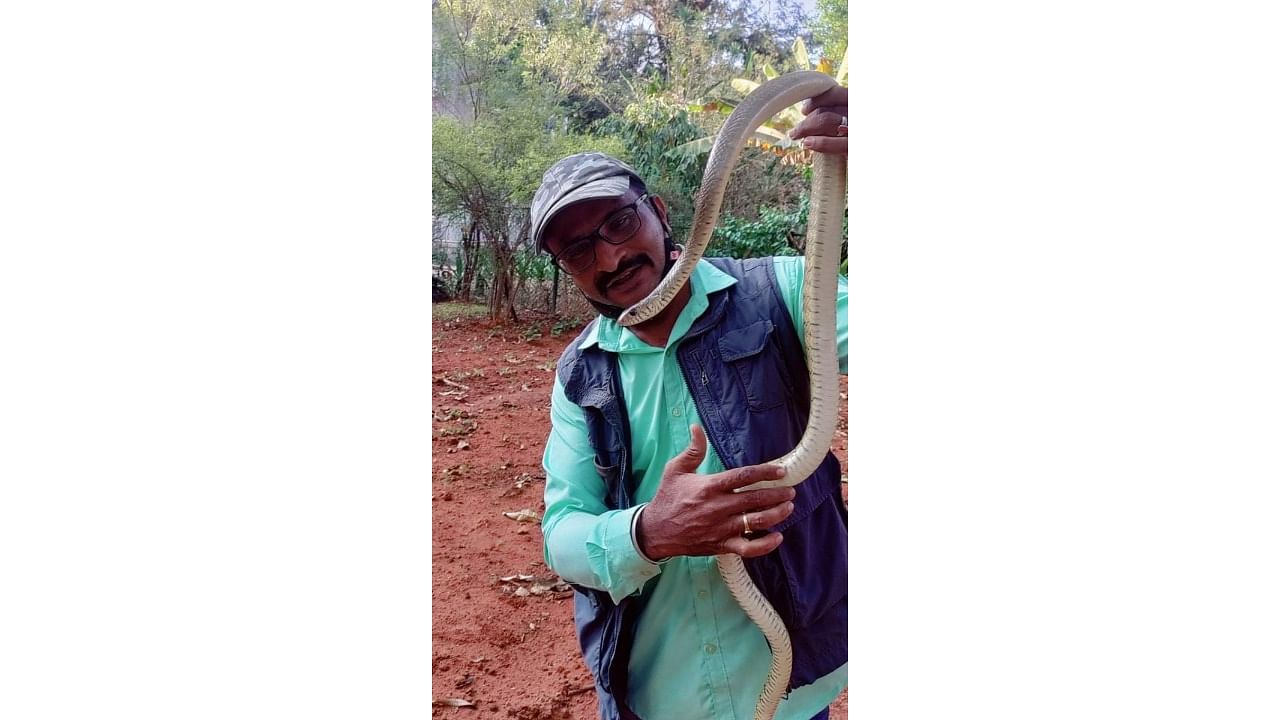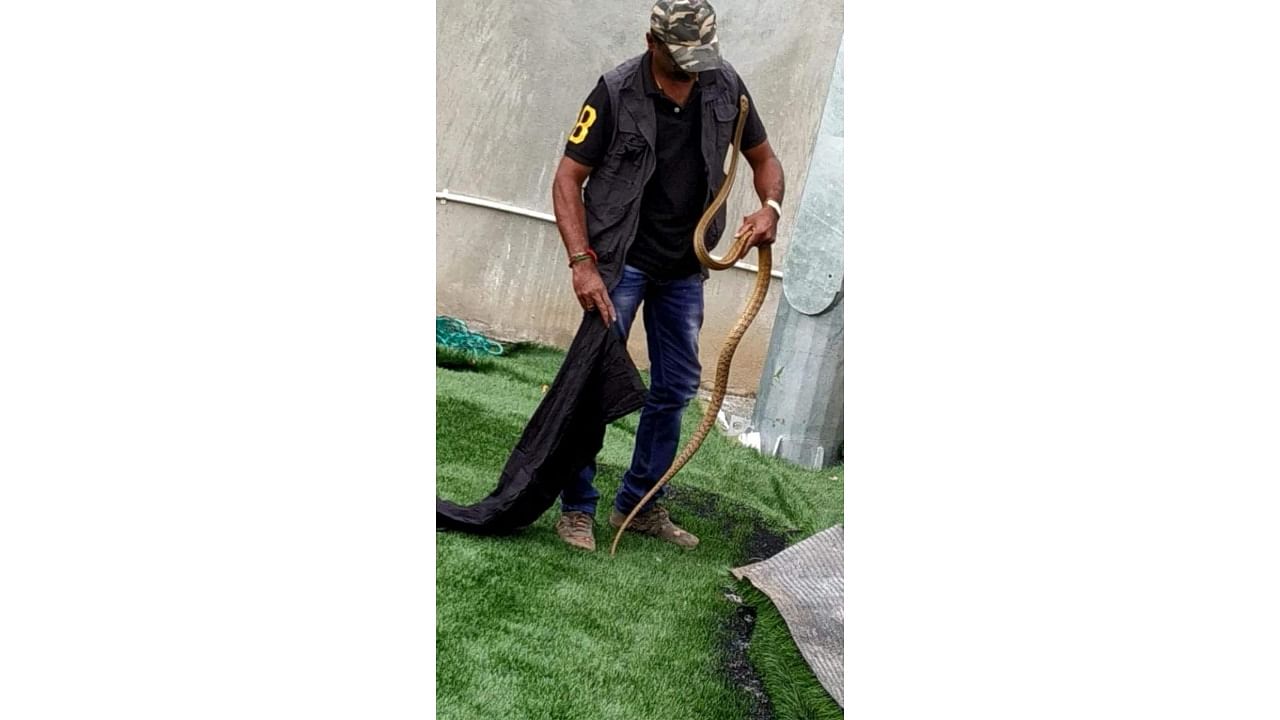

Snake rescuers, who feel neglected by paltry pay and apathy of civic authorities and citizenry alike, said Bengaluru has become a fertile breeding ground for the reptiles.
They point to several things from lack of public awareness, shoddy development works, copious rains and constricted drains as reasons.
“We get 20 to 25 calls every day to carry out rescue work but we can only attend to only two to three of them that involve rescuing snakes found inside houses,” said award-winning animal rescuer Mohan K, a volunteer with the Bruhat Bengaluru Mahanagara Palike (BBMP) animal rescue operations.
The heavy rains have brought cobras and rattlesnakes out of their pits, while rescuers also found Russell's vipers, wolf snakes, trinkets, and common kukris during the night. They were released in the city’s outskirts, open areas, reserve forests, and lakes.
“If the BBMP gives us a monthly fee, we won’t ask for money from the citizens. We usually get paid once a year or once in three years, though we provide all the details, including the location of the rescue operation, every month to the BBMP. Citizens don’t pay for our transportation charges,” he said.
Sharing his experience of a snakebite that left him in a hospital ICU for 15 days, Mohan said his nerves are damaged, his kidneys ruptured, and he had a prolapsed disc.
In the profession for 26 years, Mohan rescues snakes in Banaswadi, Hebbal, and Shanthinagar. Recently, he rescued a baby rat snake found in the kitchen of a house in Banaswadi.
“Rats have made homes beneath concrete slabs. The snakes follow these creatures and end up on the roads,” he said.
Manjunath, who covers the BBMP's Bommanahalli zone, said snakes found in homes, drains, and nearby sites are released in far-off places to avoid them getting killed by people. Manjunath has rescued around 15,000 snakes, including vipers, cobras, and rat snakes since he became a volunteer for the BBMP in 2007.
Nagaraj, an animal rescuer for the BBMP's Mahadevapura Zone, said the rescue team does not document locations where the snakes are released.
Understaffed, undertrained
“Our service is not limited to a state or a country but to the entire world. However, it has become a neglected job now. If snakes are destroyed, the population of rats increases and diseases spread,” an animal rescuer said, adding that no formal training is given to snake rescuers.
“A snake catcher died while saving four people in Nelamangala recently. Who will take care of his family? Just seven snake catchers can’t handle the entire city; we need at least 30,” he said. The animal rescuer said his team received calls at midnight about monkeys dying of electric shocks, but local authorities did not initiate action.
The World Health Organization estimates that about 50 lakh snake bites occur in India every year.
According to the Registrar General of India–Million Death Study, India reports 46,900 deaths due to venomous snakebites every year.
Manjunath, an animal ambulance driver appointed by the BBMP, has rescued around 2,000 animals in the last four years. The injured animals are taken to the Wildlife Rescue And Rehabilitation Centre (WRRC) in Bannerghatta, People for Animals facilities, and hospitals.
He said there is a rise in the number of cases of pigeons and crows getting stuck to kite threads. Manjunath said rescuers also need suitable equipment from the BBMP to lift animals like monkeys.
Helpline
Mohan K: 9845080903
Manjunath: 9945239337
Nagaraj: 9611582850
Jayaraj: 9342596704